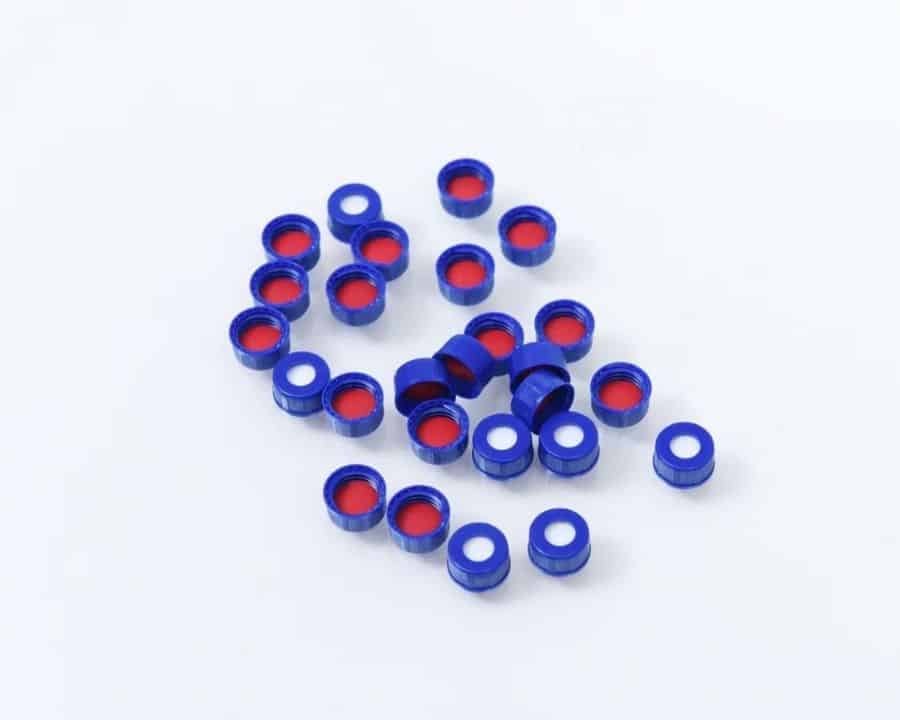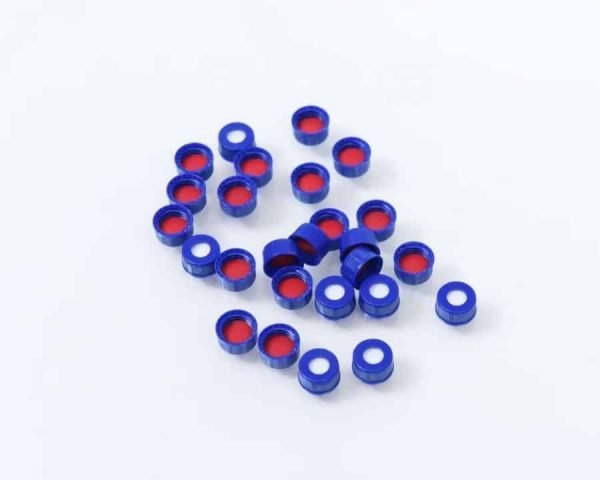When you’re working with HPLC vials, one of the aspects that often gets overlooked is the shore hardness of the septa—the rubber-like material that seals your vials. I know, it sounds technical, but don’t worry, I’m going to break it down for you as if we’re sitting down for a casual coffee chat.
What is Shore Hardness?
In simple terms, shore hardness refers to how soft or hard a material is. When it comes to septa used in HPLC vials, it’s a critical factor because it affects how the vial performs under different conditions. If you’ve ever wondered why some septa are easier to pierce while others seem tougher, that’s shore hardness in action. It’s measured on a scale called the Shore A scale for rubber-like materials, with lower numbers indicating softer materials and higher numbers representing harder ones.
But why does this matter to you? What do you think? Should you care about whether the septa in your HPLC vials is soft or hard? Let’s dive into that.


Shore Hardness Ranges in Septa
Septa generally come in various shore hardness levels depending on the material used. Each type has specific benefits based on your experimental needs.
Low Shore Hardness (40-50)
Septa with lower shore hardness (around 40-50) are softer. This means they are easier to pierce with your syringe needle, which can be beneficial if you’re performing frequent injections or using delicate needles. However, softer septa might not reseal as well after multiple punctures, leading to potential contamination or evaporation of your sample.
What I’ve found is that these softer septa are ideal when you’re using thin needles or performing multiple injections in a short period. But if you plan to store your sample for an extended time, this might not be your best choice.
Medium Shore Hardness (55-65)
This is the middle ground, where most standard septa fall. A shore hardness of 55-65 balances easy penetration and adequate resealing. Septa in this range can handle a fair number of punctures while still maintaining a good seal. Most general-purpose HPLC vials come with septa in this range, and for many lab applications, it’s the sweet spot between usability and durability.
So, what’s the verdict? This range is perfect for most routine lab work. What do you think? Could this shore hardness be right for your application?
High Shore Hardness (70-80)
On the other end of the spectrum, septa with higher shore hardness (70-80) are harder and more durable. While they are more difficult to pierce, they excel at maintaining an airtight seal, even after multiple punctures. If you’re working with volatile or sensitive samples, these tougher septa might be your go-to. However, using a thicker or stronger needle may be required to puncture through.
Personally, I think these are best when you’re working with highly sensitive or expensive samples where ensuring the vial stays sealed is crucial. What do you think of that?


Why Shore Hardness Matters for Your Application
Now, let’s look at the bigger picture: why should you even care about the shore hardness of the septa in your HPLC vials? Well, depending on the type of work you’re doing, the right shore hardness could be the difference between accurate results and contamination, evaporation, or even equipment damage.
Needle Penetration
If you’re using thin, delicate needles (think autosamplers), you’ll want a septa that’s on the softer side. A softer septa will allow the needle to penetrate without bending or dulling. On the other hand, if you’re working with more robust manual syringes, you might prefer something a bit tougher.
Resealing After Puncture
One of the key roles of the septa is to reseal after your needle has been withdrawn. Softer septa may not reseal as well after repeated punctures, increasing the risk of sample contamination or evaporation. For experiments where you’ll need to puncture the septa multiple times, medium or harder shore hardness options might offer better reliability.
Sample Sensitivity
If you’re working with volatile or sensitive samples, you need a septa that ensures a perfect seal even after multiple punctures. A higher shore hardness guarantees that the vial remains tightly sealed, protecting your sample from exposure to air or contaminants.
Matching Shore Hardness to Your HPLC System
Not only do you have to think about your samples, but your HPLC system also plays a role in the ideal shore hardness for your septa. If your system uses an autosampler, check the manufacturer’s recommendations for compatible septa. Some systems are designed for specific types of septa and could malfunction if you’re using a septa that’s too hard or too soft.
Autosampler Compatibility
Some autosamplers are designed with thin needles that work best with softer septa (40-50 Shore A). In contrast, manual systems or systems with thicker needles might perform better with septa that have a shore hardness in the higher range (70-80 Shore A).
How to Choose the Right Septa for Your Needs
Choosing the right septa depends on your specific application. Ask yourself:
- How frequently will the septa be punctured?
- Are you working with sensitive or volatile samples?
- Does your HPLC system have specific requirements for septa shore hardness?
For High-Frequency Injections
If your workflow involves a high number of injections, you’ll want to opt for a septa with a medium to high shore hardness. This ensures the septa can reseal properly, maintaining an airtight environment.
For Sensitive Samples
For highly sensitive or volatile samples, prioritize higher shore hardness. This minimizes the risk of contamination and keeps your sample protected for extended periods.
For Delicate Equipment
If your HPLC system uses thin needles or an autosampler, you might need a softer septa. This minimizes wear and tear on your equipment while ensuring proper function.
Conclusion
Shore hardness might not be something you think about every day, but when it comes to HPLC vials, it plays a crucial role in the success of your experiments. By matching the shore hardness to your specific needs—whether it’s a soft septa for easy penetration or a harder one for better sealing—you can enhance both the quality of your results and the longevity of your equipment.
If you’re on the lookout for high-quality HPLC vials at sensible pricing, you won’t miss out Mastelf. With over 13 years of experience in chromatography vials, we can help you find the exact vials you need for your applications.


Our expertise ensures that you get reliable and precise products tailored to your specific requirements. Whether you’re in pharmaceuticals, research, or any other industry relying on HPLC, we understand your needs and are here to support you in making the right purchase.
Reach out to Mastelf, and let us assist you in procuring the perfect vials for your work.











